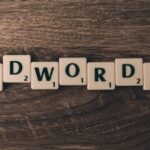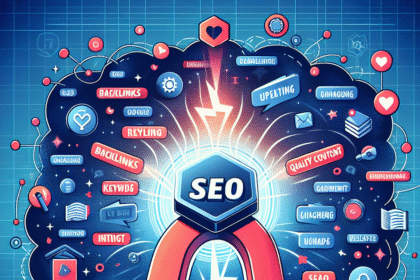The Foundational Pillars: Deconstructing On-Page SEO
On-page Search Engine Optimization represents every deliberate action taken directly on a website or specific web page to improve its position in search engine results pages (SERPs). It is the art and science of controlling the controllable. While you cannot directly command Google to rank you number one, you have near-absolute authority over the signals you send from your own digital property. This domain of SEO is foundational because without a solid on-page strategy, any off-page efforts are akin to building a mansion on sand. A powerful backlink pointing to a slow, poorly written, and confusing page is a wasted asset. On-page SEO is about creating a destination worthy of both user attention and search engine trust. It involves a meticulous combination of content strategy, HTML optimization, site architecture, and technical performance. Each element works in concert to communicate relevance, authority, and value to search crawlers and human visitors alike.
Content: The Heartbeat of On-Page Excellence
At the very core of on-page SEO lies the content itself. In the modern era of search, driven by sophisticated algorithms like Google’s Helpful Content Update, BERT, and MUM, low-quality, thin, or keyword-stuffed content is not just ineffective; it’s a liability. High-quality content is the price of entry for ranking in competitive niches.
Keyword Research and Strategic Implementation: The journey begins with understanding the language of your audience. Keyword research is no longer about finding single, high-volume terms to stuff into a page. It’s about deconstructing user intent.
- Informational Intent: Users are seeking answers. Keywords often start with “how to,” “what is,” “why do,” or are simple questions. The corresponding content should be comprehensive, educational, and thorough, such as in-depth guides, tutorials, or encyclopedic blog posts.
- Navigational Intent: Users are trying to find a specific website or brand. They might search for “Amazon login” or “Twitter.” Optimizing for these is primarily about ensuring your brand name is clearly associated with your site.
- Commercial Intent: Users are investigating products or services before a potential purchase. These keywords include “best,” “review,” “comparison,” “vs,” and specific product model numbers. Content should be comparative, detailed, and offer clear analysis to help users make a decision.
- Transactional Intent: Users are ready to buy. Keywords include “buy,” “coupon,” “discount,” “price,” or “for sale.” The corresponding pages must be product pages, service pages, or pricing pages that are optimized for conversion with clear calls-to-action.
A sophisticated on-page strategy targets a cluster of related keywords, not just one primary term. This involves identifying a “head term” (e.g., “on-page SEO”) and a constellation of long-tail keywords (“how to optimize title tags for SEO,” “what are H1 tags,” “internal linking best practices”) and LSI (Latent Semantic Indexing) keywords (related concepts like “content quality,” “user experience,” “site architecture”). By weaving these terms and concepts naturally into a comprehensive piece, you signal to Google that your page is a definitive resource on the topic, capable of satisfying multiple related queries.
Content Quality, Depth, and Originality: What constitutes “quality”?
- Comprehensiveness: The content should fully answer the user’s query, anticipating follow-up questions. If a user searches for “how to bake a sourdough bread,” a quality page won’t just provide a recipe. It will explain the science of a starter, discuss different types of flour, troubleshoot common problems like a flat loaf, and perhaps include a video of the kneading technique. It leaves the user with no need to click the “back” button and choose another result.
- Originality: The content should not be a regurgitation of the top-ranking pages. It must offer a unique perspective, original research, new data, a case study, or a more effective way of explaining a complex topic. This is a critical differentiator.
- Accuracy and Fact-Checking: Information must be correct, up-to-date, and, where appropriate, cite authoritative sources. This builds trust with both users and search engines.
- Readability and User Experience: The content must be easy to consume. This means short sentences, concise paragraphs, use of bullet points and numbered lists, and a logical flow. A wall of unbroken text, no matter how brilliant, will cause users to bounce, sending negative signals to Google.
Demonstrating E-E-A-T On the Page: Google’s Quality Rater Guidelines emphasize Experience, Expertise, Authoritativeness, and Trustworthiness (E-E-A-T). You demonstrate this on the page through several methods:
- Author Bylines and Bios: Clearly state who wrote the content. Link to a detailed author page that lists their credentials, experience, other publications, and social media profiles. This directly addresses the “Experience” and “Expertise” components.
- Citing Sources: Link out to authoritative studies, government statistics, or respected industry publications to back up claims. This shows you are part of the larger expert conversation.
- “About Us” and “Contact” Pages: A robust “About Us” page detailing your company’s mission and history, along with an easy-to-find “Contact Us” page with a physical address and phone number, builds “Trustworthiness.”
- Show, Don’t Just Tell: Instead of just saying you’re an expert, demonstrate it with case studies, original data, and detailed, nuanced explanations that a novice couldn’t possibly write.
Multimedia Integration: A modern web page is more than just text. Strategically incorporating multimedia elements enhances user engagement and provides additional on-page SEO opportunities.
- Images: Break up text, illustrate complex points, and make the page more visually appealing. Every image should have descriptive file names (e.g.,
on-page-seo-elements-infographic.jpginstead ofIMG_8765.jpg) and, crucially, optimized alt text. - Videos: Can significantly increase “dwell time,” a key user engagement signal. A video tutorial embedded within a “how-to” article provides immense value.
- Infographics: Present complex data in a visually digestible format. They are also highly “linkable assets,” bridging the gap between on-page and off-page SEO, as other sites are more likely to link to a valuable infographic.
HTML Elements: Speaking a Search Engine’s Native Language
While users see a designed web page, search engine crawlers primarily read the underlying HTML code. Optimizing key HTML elements is like providing a clear, concise summary and table of contents for the crawler, ensuring it understands your page’s topic and hierarchy.
Title Tags (
- Keyword Placement: The primary keyword should be placed as close to the beginning of the title tag as possible.
- Length: Google allots a pixel width, which roughly translates to 55-65 characters. Titles longer than this will be truncated, potentially cutting off important keywords or reducing click-through rate (CTR).
- CTR Optimization: The title must be compelling. It should act as a headline that entices the user to click. Using numbers (“10 Ways to…”), questions (“What is On-Page SEO?”), or promising a comprehensive solution (“The Ultimate Guide to…”) can significantly improve CTR.
- Uniqueness: Every page on your site must have a unique title tag to avoid signals of duplicate content and to target specific keywords for each page.
Meta Descriptions (): While not a direct ranking factor, the meta description is a critical on-page element for its impact on CTR. It’s the 155-165 character snippet that appears below the title tag in the SERPs.
- Sales Pitch: Think of it as ad copy for your page. It should summarize the page’s content and include a compelling reason for the user to click.
- Keyword Inclusion: Including the target keyword is crucial. Google often bolds the user’s search term within the meta description, drawing their eye and confirming the page’s relevance.
- Uniqueness: Like title tags, every page needs a unique meta description tailored to its specific content. If you leave it blank, Google will generate one from the page’s content, which is often a poorly formatted and uncompelling snippet.
Header Tags (
,
,
, etc.): Header tags create a logical, hierarchical structure for your content.
Image Alt Text (
- Accessibility: Screen readers use alt text to describe images to visually impaired users. This is its primary and most important function.
- SEO: Search engines cannot “see” images. Alt text provides context, helping them understand what the image is about and enabling it to rank in Google Images search. It’s a prime opportunity to include the target keyword or a relevant variation in a natural, descriptive way. Good alt text:
"Infographic showing the key elements of on-page and off-page SEO."Bad alt text:"seo image linkbuilding seo."
Schema Markup (Structured Data): Schema is a form of microdata that, once added to a webpage, creates an enhanced description (commonly known as a rich snippet) which appears in search results. It’s a shared vocabulary that search engines use to better understand your content.
- Enhanced Results: It can enable rich snippets like star ratings for reviews, cooking times for recipes, event dates, and FAQ dropdowns directly in the SERPs.
- Increased Visibility and CTR: These rich snippets make your listing stand out from the competition, which can dramatically increase click-through rates even if your ranking position doesn’t change.
- Types of Schema: There are hundreds of schema types, including for articles, products, local businesses, recipes, events, and people. Implementing the correct schema provides Google with explicit, unambiguous information about your content.
Site Architecture and Internal Linking: The SEO Superhighway
Site architecture is how the pages on your website are structured and linked together. A logical architecture helps users and search engines navigate your site efficiently.
Logical URL Structure: URLs should be clean, descriptive, and easy to read.
- Human-Readable:
https://example.com/blog/on-page-seo-guideis far superior tohttps://example.com/index.php?cat=12&id=88. - Keyword Inclusion: Including the primary keyword in the URL is a minor but helpful ranking signal.
- Hierarchy: The URL should reflect the site’s structure. For example,
example.com/services/seo/on-page-seoclearly shows the relationship between pages. - Conciseness: Shorter URLs are generally preferred and are easier to share.
Internal Linking Strategy: Internal links are hyperlinks that point from one page on your site to another page on the same site. A strategic internal linking plan is a powerful on-page SEO tactic.
- Distributes “Link Equity”: When one of your pages earns backlinks from external sites, it accumulates authority (often called “PageRank” or “link equity”). You can pass some of this authority to other important pages on your site through internal links.
- Establishes Context: The anchor text (the clickable text of a link) of an internal link tells Google what the destination page is about. Using descriptive anchor text like “learn more about our on-page SEO services” instead of “click here” is crucial for establishing semantic relevance.
- Improves Crawlability: A strong internal linking structure ensures that search engine crawlers can find all the pages on your site, even those that are deep within the architecture.
- Enhances User Experience: It helps users discover more of your relevant content, keeping them on your site longer and guiding them through a conversion funnel.
Topical Siloing and Topic Clusters: This is an advanced architectural strategy. It involves organizing your content into distinct “silos” or “clusters.”
- Pillar Page: You create a comprehensive “pillar” page on a broad topic (e.g., “Digital Marketing”). This page targets a high-volume, broad keyword.
- Cluster Content: You then create multiple “cluster” pages that cover specific sub-topics in greater detail (e.g., “On-Page SEO,” “Link Building,” “Email Marketing,” “PPC Advertising”).
- Linking: Each cluster page links up to the pillar page, and the pillar page links down to all its supporting cluster pages. This creates a tightly-knit, internally-linked group of pages. This structure signals to Google that you have deep expertise and authority on the overarching topic, boosting the ranking potential of all pages within the cluster.
Technical On-Page SEO: The Engine Under the Hood
Technical SEO is often considered its own discipline, but many of its most critical components are executed on-page and are inseparable from a holistic on-page strategy.
Page Speed and Core Web Vitals: Page loading speed is a confirmed ranking factor. A slow site frustrates users and is penalized by Google. Google’s Core Web Vitals are specific metrics that measure user experience:
- Largest Contentful Paint (LCP): Measures loading performance. To provide a good user experience, LCP should occur within 2.5 seconds of when the page first starts loading.
- First Input Delay (FID): Measures interactivity. For a good user experience, pages should have an FID of 100 milliseconds or less.
- Cumulative Layout Shift (CLS): Measures visual stability. To provide a good user experience, pages should maintain a CLS of 0.1 or less.
Optimizing for these involves compressing images, leveraging browser caching, minifying CSS and JavaScript, and using a high-quality hosting provider.
Mobile-Friendliness: With Google’s move to mobile-first indexing, the mobile version of your website is the primary one used for ranking. Your site must be fully responsive, meaning it automatically adjusts its layout to fit any screen size, from a large desktop monitor to a small smartphone. Text must be readable without zooming, and clickable elements must be spaced appropriately for tapping with a finger.
Crawlability and Indexability: Search engines must be able to find and understand your content.
- Robots.txt: A file at the root of your site that gives instructions to search engine crawlers about which pages or sections of the site they should or should not crawl.
- XML Sitemaps: A list of all the important URLs on your site. Submitting this to Google Search Console helps ensure that Google is aware of all your content.
- Meta Robots Tags: HTML tags placed on a specific page can tell crawlers “noindex” (do not include this page in the search results) or “nofollow” (do not follow the links on this page). These are used to prevent thin, duplicate, or private pages from being indexed.
Building External Credibility: Mastering Off-Page SEO
If on-page SEO is about perfecting your own house, off-page Search Engine Optimization is about building your reputation within the neighborhood. It encompasses all activities you and others do away from your website to raise the ranking of a page with search engines. While on-page SEO builds the foundation, off-page SEO builds the authority and trust that truly catapults a site to the top of the SERPs for competitive terms. It’s about earning external validation. Google’s core algorithm was built on the premise that a link from one site to another is a vote of confidence. While the algorithm is now infinitely more complex, this principle remains central. Off-page SEO is primarily, though not exclusively, about the art and science of link building, but it also includes a wider spectrum of signals like brand mentions, social media presence, and online reputation.
Link Building: The Cornerstone of Off-Page Authority
A backlink (or inbound link) is a hyperlink from an external website to your website. It is the single most powerful off-page signal. However, not all links are created equal. A single, high-quality link can be worth more than a thousand low-quality links.
The Anatomy of a High-Quality Backlink:
- Relevance: The most crucial factor. A link from a highly respected coffee blog to your e-commerce site that sells sustainable coffee beans is immensely valuable. A link from a random blog about auto repair is, at best, worthless and, at worst, a spam signal. The relevance can be at the domain level (coffee site linking to coffee site) or the page level (an article about pour-over techniques linking to your guide on pour-over coffee).
- Authority: The authority of the linking website is paramount. A link from a major news publication like The New York Times or an industry-leading resource like Moz passes a significant amount of “link equity.” Tools like Ahrefs’ Domain Rating (DR) and Moz’s Domain Authority (DA) are used to estimate this authority, although Google has its own internal, more sophisticated metrics. A link from a brand-new, unknown blog passes very little authority.
- Placement: The placement of the link on the page matters. A link embedded editorially within the main body content of an article is far more valuable than a link in the footer or sidebar of a site, which is often programmatically placed and carries less weight.
- Anchor Text: The clickable text of the link provides strong contextual clues to Google about the linked page’s topic. If a page receives many links with the anchor text “best organic coffee beans,” Google gains confidence that the page is indeed about the best organic coffee beans. A natural backlink profile, however, will have a variety of anchor texts, including branded anchors (“Your Coffee Co.”), naked URLs (“https://yourcoffeeco.com“), and generic anchors (“click here”), in addition to exact-match and partial-match keyword anchors.
- “Dofollow” vs. “Nofollow”: A standard link is a “dofollow” link, meaning it passes authority. A “nofollow” attribute (
rel="nofollow") can be added to a link to instruct search engines not to pass authority. While “dofollow” links are the primary goal for building authority, a natural link profile contains a mix of both. Links from sources like social media posts or forum comments are typically “nofollow.”
White-Hat Link Building Strategies (Earning Links): These are ethical, sustainable methods that align with Google’s guidelines.
- Guest Posting: Writing an article for another website in your niche. In return for the high-quality content, you typically get an author bio with a link back to your site. The key is to target reputable, relevant sites and provide genuine value, not just to get a link.
- Broken Link Building: This involves finding a resource page on a relevant website that has a link to a page that no longer exists (a “404 error”). You then contact the site owner, inform them of the broken link, and suggest your own similar (or better) resource as a replacement.
- Resource Page Link Building: Find pages that curate lists of the best resources on a given topic (e.g., “The 50 Best Resources for Learning SEO”). If you have a high-quality, comprehensive guide, you can reach out and suggest its inclusion on the list.
- Digital PR: This involves creating a newsworthy story, study, or content asset and promoting it to journalists, bloggers, and publications. This could be a data-driven study about coffee consumption trends, a “state of the industry” report, or an innovative infographic. When successful, this can result in high-authority links from major news outlets.
- The Skyscraper Technique: Popularized by Brian Dean, this involves three steps: 1) Find link-worthy content in your niche that has performed well. 2) Create something significantly better (more up-to-date, better designed, more thorough). 3) Reach out to the people who linked to the original piece and ask them to link to your superior version instead.
- Unlinked Brand Mentions: Set up alerts to find where your brand is mentioned online without a link. You can then reach out to the author or webmaster and politely request that they make the mention a clickable link to your site.
Black-Hat vs. White-Hat: The Perilous Path:
Black-hat link building involves tactics that violate search engine guidelines in an attempt to manipulate rankings.
- Private Blog Networks (PBNs): A network of websites created for the sole purpose of linking to a single “money site” to boost its authority. Google is very effective at identifying and devaluing these networks.
- Link Farms: Pages or sites with little to no unique content that exist only to list links to other sites.
- Paid Links (That Pass PageRank): Buying “dofollow” links is a direct violation of Google’s guidelines. If discovered, it can lead to a manual penalty, causing your site’s rankings to plummet. (Note: Sponsoring content or advertising is fine, but these links should use a
rel="sponsored"orrel="nofollow"attribute). - Excessive Link Exchanges: “You link to me, and I’ll link to you” schemes, when done at scale, can be seen as a manipulative link scheme.
The risk of black-hat SEO is immense. A manual penalty can take months or even years to recover from, if recovery is possible at all. Sustainable, long-term success in SEO is built on a foundation of white-hat strategies that focus on earning, not manipulating, authority.
Beyond Links: The Broader Spectrum of Off-Page Signals
While links are the most heavily weighted signal, off-page SEO is a more holistic concept. Other external signals contribute to a site’s overall authority and trustworthiness.
- Brand Mentions (Linked and Unlinked): Google is evolving to understand entities and concepts. When a respected website mentions your brand name, even without a hyperlink, it can be interpreted as a signal of authority and relevance. This is why building a strong brand identity is a powerful, long-term SEO strategy.
- Social Media Signals: While the direct impact of likes, shares, and retweets on rankings is a topic of debate (Google has stated they are not a direct ranking factor), the indirect benefits are undeniable. A strong social media presence can:
- Drive traffic directly to your content.
- Increase the visibility of your content, leading to more people discovering it and potentially linking to it.
- Build brand awareness and trust.
- Online Reviews and Reputation Management: For local businesses, reviews on Google Business Profile, Yelp, and other industry-specific review sites are a critical off-page factor. Positive reviews build trust with potential customers and send positive signals to search engines. Managing and responding to both positive and negative reviews is a key part of modern off-page SEO.
- Forum and Community Engagement: Participating in relevant online communities like Reddit, Quora, or niche forums can be a valuable off-page activity. By providing genuinely helpful answers and solutions to user problems (and occasionally including a relevant, non-spammy link to your content), you can drive targeted traffic and establish yourself or your brand as an expert in the field.
- Influencer Marketing: Collaborating with influencers in your niche can amplify your content’s reach. When an influencer shares your content with their established audience, it can lead to a surge in traffic, social signals, brand mentions, and potentially new backlinks as their followers discover and share your work.
E-E-A-T in Off-Page SEO: Building Your External Resume
Off-page signals are a powerful way for Google to validate the E-E-A-T you claim to have on your own site.
- Expertise and Experience: When other experts in your field link to your content or quote your work, it externally validates your expertise.
- Authoritativeness: This is the essence of off-page SEO. Links from high-authority sites (e.g., universities, government agencies, major news outlets) are the strongest possible signal that your site is an authority on its topic.
- Trustworthiness: Positive reviews, mentions in trusted publications, and a clean, natural backlink profile all contribute to Google’s assessment of your site’s trustworthiness. A profile full of links from spammy, low-quality sites does the opposite.
The Great Synergy: On-Page and Off-Page SEO in Concert
The debate of “On-Page vs. Off-Page SEO” presents a false dichotomy. It’s not a question of which one is more important, but rather how they work together in a powerful, symbiotic relationship. One cannot achieve its full potential without the other. Neglecting one in favor of the other is the most common reason for a stalled or failed SEO campaign.
The Unbreakable Symbiosis: A Tale of Two Analogies
To truly grasp their interdependence, two analogies are particularly effective:
Analogy 1: The World-Class Restaurant with No Address
Imagine you have perfected your on-page SEO. You are a Michelin-starred chef. Your content is a culinary masterpiece (perfect quality and depth). Your site’s technical performance is flawless; the kitchen is spotless and hyper-efficient (fast page speed). The menu is perfectly structured and easy to read (great site architecture and HTML tags). You have created the perfect destination.
However, you have zero off-page SEO. This is like having the world’s greatest restaurant but no signs, no listings in guidebooks, no reviews, no word-of-mouth recommendations, and no address known to the public. No matter how incredible the experience inside might be, very few people will ever find it. Powerful off-page signals—backlinks, brand mentions, positive reviews—are the signs on the digital highway that guide traffic and authority to your perfectly optimized destination. Without them, your masterpiece sits in isolation.
Analogy 2: The Giant Billboard Pointing to an Abandoned Lot
Now, imagine the reverse scenario. You’ve focused exclusively on off-page SEO. You’ve managed to get a massive, glowing billboard on the digital equivalent of Times Square (a backlink from a huge authority site). Everyone sees it, and it piques their interest.
However, when they follow the billboard’s directions, they arrive at an abandoned lot (your website with poor on-page SEO). The content is thin and unhelpful. The site is slow to load and looks broken on their phone. They can’t find what they are looking for because of a confusing structure. What happens? They leave immediately. This “bounce” sends a strong negative signal to Google: “This destination was not helpful.” The initial authority passed by the backlink is squandered because the on-page experience failed to meet the expectation set by the off-page signal. Over time, Google may even devalue the powerful backlink, concluding that it must be pointing to a low-quality resource.
The Virtuous Cycle:
When on-page and off-page SEO work in harmony, they create a self-reinforcing, virtuous cycle.
- Great On-Page Attracts Off-Page: You begin by creating an exceptionally valuable piece of content—a “linkable asset.” This could be a groundbreaking study, an ultimate guide, or a free tool.
- Off-Page Amplifies On-Page: You then perform off-page promotion for this asset, earning a few high-quality backlinks and social shares.
- Amplification Increases Visibility: This initial off-page boost pushes your content higher in the SERPs, exposing it to a much wider audience.
- Visibility Attracts More Off-Page: Because the content is so valuable (thanks to your excellent on-page work), this new, larger audience naturally links to it and shares it. This is how content “goes viral” and earns links passively.
- New Authority Boosts Entire Site: The authority gained by this successful page is then distributed throughout your entire site via your strategic internal linking (an on-page tactic), lifting the ranking potential of all your other pages.
This cycle demonstrates that the two are not separate tasks but two halves of the same whole. Excellent on-page SEO makes your off-page efforts more effective, and successful off-page SEO amplifies the value of your on-page assets.
Strategic Prioritization: Where Should You Focus Your Efforts?
While a balanced approach is the ultimate goal, the immediate priority can shift depending on the website’s age, industry, and current state.
For a Brand-New Website: The focus must be almost exclusively on-page SEO for the first 3-6 months.
- Foundation First: You must build the house before you can invite people over. This means conducting thorough keyword research, establishing a logical site architecture, creating a core set of high-quality pillar and cluster content, and ensuring the site is technically sound (mobile-friendly, fast, and crawlable).
- Building an “Authority Deficit”: A new site has zero authority. Attempting aggressive off-page SEO too early is not only ineffective (no one will link to a site with no content) but can also look unnatural to Google. A brand-new site acquiring dozens of high-powered links in its first month is a red flag for manipulation.
- The Initial Goal: The goal in this phase is to create a site that deserves to be ranked and deserves to be linked to.
For an Established Website with Good Content but Stagnant Rankings: The priority should shift heavily towards off-page SEO.
- The Missing Ingredient: This site likely has its on-page elements in a good state. The reason it’s not ranking on page one for competitive terms is likely a lack of external authority. It’s the “great restaurant with no signs.”
- Conduct a Link Gap Analysis: Use SEO tools to compare your backlink profile to those of your top-ranking competitors. Identify the high-authority, relevant sites that link to them but not to you. This creates a roadmap for your outreach and link-building efforts.
- Activate Your Assets: Identify your best content pieces (“linkable assets”) and begin a concerted digital PR and outreach campaign to build the links and mentions needed to compete.
For a Site in a Hyper-Competitive Niche: A continuous, balanced, and integrated cycle is non-negotiable.
- The Arms Race: In competitive spaces (e.g., finance, law, health), your top competitors are doing everything right. They have flawless on-page SEO and powerful, constantly growing backlink profiles.
- Constant Motion: You cannot afford to focus on one area for too long. Your strategy must involve simultaneously producing best-in-class content (on-page) while also executing a persistent and creative link-building campaign (off-page).
- Integration is Key: Your content strategy should be informed by your link-building opportunities. For example, if you see an opportunity to get a link from a major tech publication, you might create a new data study specifically designed to appeal to that publication’s audience. Your on-page and off-page teams or efforts must be in constant communication.
Auditing Your Current State: The first step for any existing site is a comprehensive SEO audit.
- On-Page Audit: Check technical health (Core Web Vitals, mobile-friendliness, indexability), content quality, HTML tag optimization, and internal linking structure.
- Off-Page Audit: Analyze your backlink profile for quality, relevance, and velocity. Compare your profile against competitors to identify strengths and weaknesses.
The results of this audit will provide a clear, data-driven answer to the question: “What should we do next?”
A Hypothetical Campaign Walkthrough: “Sustainable Bean Co.”
Let’s illustrate the synergy with a hypothetical e-commerce site, “Sustainable Bean Co.,” which sells ethically sourced, high-grade coffee beans.
Phase 1: Months 1-3 (On-Page Foundation)
- Keyword Research: They don’t just target “coffee beans.” They identify clusters around “best single-origin coffee,” “how to use a French press,” “pour-over vs. drip,” and “fair trade coffee benefits.”
- Content Creation:
- They create a cornerstone pillar page: “The Ultimate Guide to Home Coffee Brewing.”
- They write detailed cluster articles like “A Beginner’s Guide to Grinding Your Own Coffee” and “Choosing the Right Water Temperature for Coffee.”
- Each product page has a unique, detailed description, brewing recommendations, and customer reviews (user-generated on-page content).
- Technical & HTML SEO: They ensure the site is lightning-fast, mobile-perfect, and all product, category, and blog pages have optimized title tags, meta descriptions, and header structures. They implement Product and Review schema. They build a logical internal linking structure connecting the guide to the relevant products.
Phase 2: Months 4-6 (Pivoting to Off-Page Authority)
- The Asset: Their “Ultimate Guide” is now a world-class, link-worthy asset.
- Guest Posting: They write articles for popular coffee blogs on topics like “The Environmental Impact of Your Morning Cup,” with a bio link back to Sustainable Bean Co.
- Digital PR: They create a study on the “Top 10 U.S. Cities for Coffee Lovers” using original survey data. They pitch this story to lifestyle and food journalists, earning high-quality links from local news sites and national blogs.
- Broken Link Building: They find outdated coffee resource pages and suggest their “Ultimate Guide” as a replacement for dead links.
Phase 3: Months 7+ (The Integrated Virtuous Cycle)
- Synergy in Action: A food blogger who linked to their Digital PR study discovers their “Ultimate Guide” and shares it on social media. This drives a surge of traffic.
- New Content from Off-Page Insight: During outreach, they notice many bloggers are interested in the “sustainability” angle. They create a new on-page content hub dedicated to “Sustainable Coffee Sourcing,” complete with farmer interviews and supply chain transparency reports. This new content is now a powerful asset for future link-building campaigns.
- Authority Distribution: The authority gained from the high-powered links to their guide and data study is passed via internal links to their key product category pages, helping “single-origin coffee” and “organic coffee beans” rank higher in the SERPs and drive sales.
This walkthrough shows that the process isn’t linear but cyclical. On-page creates the value, off-page builds the authority, and that authority makes the on-page assets even more powerful.
The Evolving Landscape and the Unifying Principle
The world of SEO is in constant flux, driven by advances in Google’s machine learning and a deeper understanding of user behavior. This evolution is further blurring the lines between on-page and off-page, tying them together with a single, overarching principle.
The Impact of AI and Semantic Search: Algorithms like BERT and MUM allow Google to understand language and context with near-human nuance. This means:
- On-Page: Keyword stuffing is dead. It’s about covering a topic comprehensively and naturally. Google understands synonyms and related concepts. Creating “helpful content” that truly satisfies a user’s need is the only viable on-page content strategy.
- Off-Page: The context of a link is more important than ever. Google can understand if a link from an article about “baking” to a site about “car repair” is irrelevant, even if the anchor text is perfectly optimized. Link relevance is now a highly sophisticated, semantic calculation.
The Primacy of User Experience (UX): UX has become a critical ranking component that straddles the on-page/off-page divide.
- On-Page UX: This includes factors like page speed (Core Web Vitals), mobile-friendliness, intuitive navigation, and readable content. These are direct, measurable on-page signals.
- Off-Page Validation of UX: What is the ultimate goal of good UX? To satisfy the user. How does Google measure user satisfaction at scale? By observing user behavior signals (like low bounce rates and high dwell time) and, crucially, by interpreting off-page signals. A high-quality backlink is an endorsement from another human creator that your page provides a good experience and valuable information. Positive online reviews are direct testimonials of a good user experience.
The Unifying Principle: What Really Matters is Helpfulness
Ultimately, the battle between on-page and off-page SEO is a distraction. The single factor that “really matters” is creating and promoting genuinely helpful content.
- On-Page SEO is the process of crafting that helpfulness directly on your site. It’s about making your content clear, deep, accessible, fast, and easy for both users and search engines to understand.
- Off-Page SEO is the process of proving that helpfulness to the wider web. It’s about earning endorsements, recommendations, and votes of confidence from other reputable entities, demonstrating that the helpfulness you’ve created is recognized and valued by others.
A successful SEO strategy is not about choosing one over the other. It’s about recognizing that they are two sides of the same coin. The true goal is to create the best possible resource on the internet for your chosen topic (on-page) and then ensuring that resource earns the external recognition it deserves (off-page). This holistic, user-centric approach is the only sustainable path to long-term success in the ever-evolving landscape of search.










